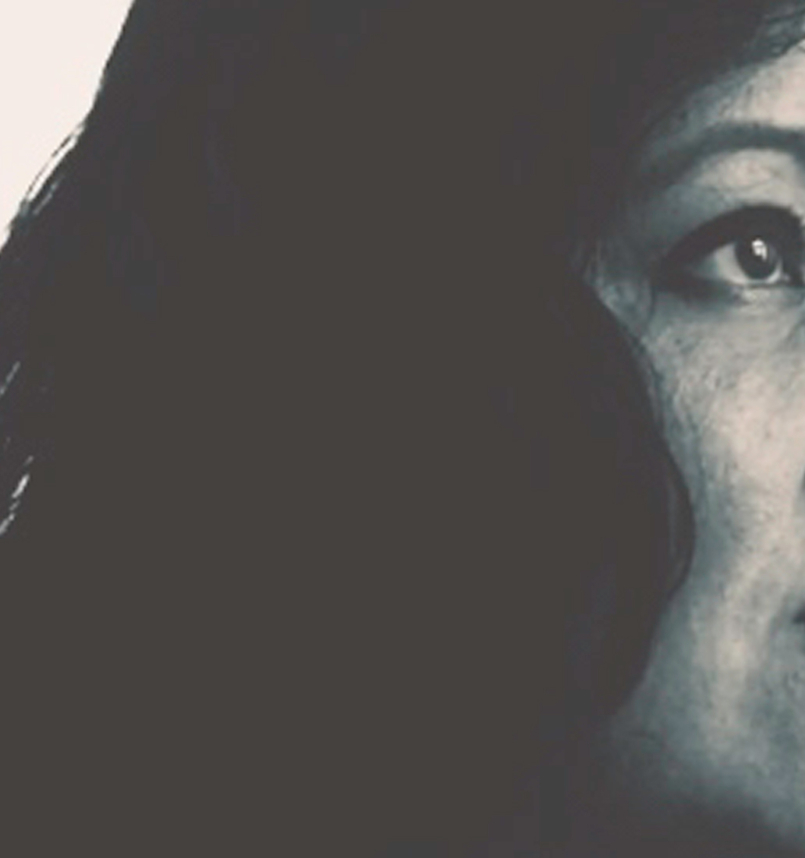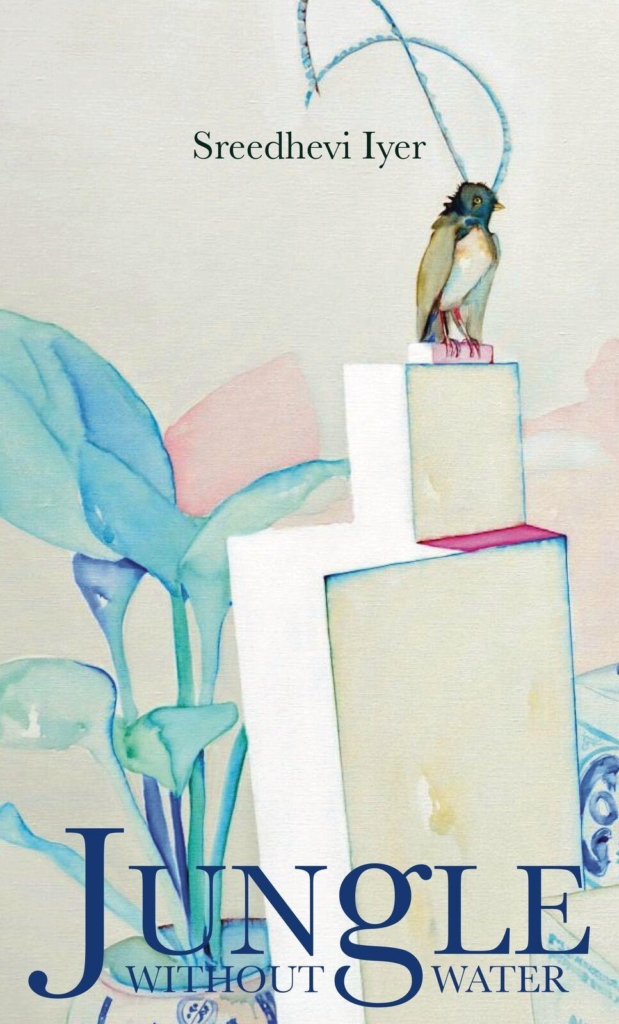Sreedhevi Iyer

Between the Lines interviews a diverse selection of Australian writers to uncover the hidden processes, research, and inspiration that goes into the making of a book.
Sreedhevi Iyer has lived in Malaysia, Hong Kong and Australia, and can only answer “many places” when asked where she is from. Her writing has been published in several countries, including the United States, United Kingdom, Hong Kong, Malaysia, Australia, Sweden, and Italy. Jungle Without Water and Other Stories is her first book published in Australia. The Southeast Asian edition was shortlisted for the Penang Monthly Book Prize 2017. Her fiction work has also been nominated for the Pushcart Prize in the United States. She has guest edited Cha: An Asian Literary Journal, and Drunken Boat, and was writer-in-residence at Lingnan University of Liberal Arts in Hong Kong.
Jungle Without Water – Synopsis
This debut short story collection delves into the shifting boundaries and human displacement of our era. Of Indian-Malaysian background, Sreedhevi Iyer is adept at locating tensions within her own diaspora while also casting a forensic eye on Australian social and cultural attitudes. A teacher of creative writing at RMIT and the University of Melbourne, Iyer has a gift for radiant prose, but also an astonishing range of voices, from simple riffs on backyard suburbia to the magic realism of a narrative told by a “divine” coconut. Her sharp wit and sense of irony keep stories of refugees, inter-racial tension and human prejudice profoundly in our sights.
Tell us about yourself Sree, and how your experiences influenced Jungle Without Water and Other Stories.
When people ask me where I’m from, I now say “many places”, as it is now the most accurate answer. I’ve become quite familiar with movement to places, both temporarily, and permanently, that I think it imbued itself into my writing. I was born in Malaysia, and I’ve lived in Australia and Hong Kong. When I travel, I tend to be of that place as much as I can. This can sometimes throw up a window through which I can familiarise strangeness. For example, I once visited Pondicherry in India with a white friend. I understood the Tamil language being spoken, but we ate things like chicken cordon bleu. There was so much French being spoken around us, and this aspect was also imprinted into the architecture and aesthetics of the place. I came across these brass containers of water with flowers floating on top. It was so Tamil, and so French, at the same time. I got it viscerally. I try to bring that into my work.
That movement can certainly be felt through the stories collectivised here, and it is very commanding. The title story, Jungle Without Water, is a particularly powerful narrative. It follows Jogi—a character trying to navigate the unfamiliar Australian manners and streets. Can you elaborate on this—on the concept of surviving, despite the odds?
Thank you. I think today you see many Jogis around, and you’ve to stop and wonder what his life must be like, when he is not outside with his friends. But you see, Jogi is not that helpless. He’s in an odd position where he needs help with local knowledge, but, then again, it’s not what’s local to the general population, but local according to a very marginalised community—a local spot that is really a foreign thing on that land, a place of worship that feels sufficiently familiar, perhaps sufficiently sacred. There is of course no such thing, and Jogi has to learn that in the story. In the end Jogi has to shift within himself, find a different kind of sanctity.
I found myself fully immersed in Jogi’s journey to find sanctity because the voice you’ve given him is so demanding. His is one of a myriad in the collection—where did you draw them all from?
I get asked this quite a bit! I think the myriad of voices is something that is normal in my world. From having moved cultures several times, to having travelled quite a bit, I’m very aware of how different people can sound while saying the same thing. We’re more alike than different, but we are also grappling with what it means to move a lot. I’m personally a little sound sensitive, and sometimes I know the voice of the character before I know what it is they are going to do, or what the story is going to be about. I know the tone—if its delight, or anguish, or frustration—and sometimes the tone informs what’s happening.
That’s very interesting—especially considering the eighth story! Where, in particular, did the unforgettable voice of the “divine” coconut come from?
Again, many have asked me this. I wanted to write a story of dissatisfaction with gentrification—something many feel all across the world, about places they hold dear, and that has become unrecognisable. But I was conscious of using a person’s voice for this. There is another version of this story that has been published in the US, where it is an individual complaining about the gentrification. But I also wanted to have something that was emblematic of sanctity, and the coconut that’s used for worship seemed to fit best. Something considered sacred, and local to the area, complaining about the state of affairs—and a kind of desecration, if you will, going on around it—seemed the most fitting voice to use. It was funny—disgruntled coconuts are funny—so that gave me the leeway.

The divine coconut’s story is one of ten incredible pieces that were gathered for this collection, what was your process for bringing them all together?
This was something I worked on with my editors. My editors at Gazebo, for the Australian edition, were incredibly helpful and particular about the order of stories. I suppose we both wanted an arrangement that reflected the different states of movement. From those who had moved and were confused, to those who were between movements and still confused. And, also, those who had moved just a little—like the wife in The Longan Seller—and was in a state of life where she was suddenly responsible for everything.
I found these states of movement across the collection emotionally evocative, and pertinent given Australia’s history and current political climate; and, as someone of Malay heritage, I know, to a degree, what it means to be different in this country. What resonated with me most was your attention to the precariousness of identity. Was this something you sought to sew into the collection, or something that bled through the pages organically?
I think it was more organic; though, instead of the blood metaphor, I would use water—it kind of found its own level. I do think identity is precarious, but I also think its fluid. What’s privileged in one part of the world, is a minority status in another. And vice versa. I feel in our cultural discourse we sometimes block that out—someone considered privileged is assumed to be privileged everywhere, and someone considered a minority is considered oppressed everywhere, and neither are true. Australia, in itself, I find, is incredibly unique. There’s such a profound sense of egalitarianism, and also a stubbornness, a blindfold, to difference, that I have encountered again and again and again. I think it comes from not knowing how to move past the underdog mentality—if Australia is the global underdog, how can it be oppressive of others?
I have definitely encountered fellow Australians wearing this blindfold, and I felt that attitude towards difference so strongly when I read The Lovely Village from the collection. You have produced a vibrantly insightful array of pieces, what else would you like readers to take from your collection?
To consider that the myriad of voices, characters, aesthetics, and so on, rather than singular, is not experimental—it is the norm in many parts of the world.
As a creative writing teacher at RMIT and Melbourne University, you must have some wonderful advice for budding writers. What might that be? And what advice would you offer to other ethnically and culturally diverse writers who find it far harder to find a place for their writing, especially here in Australia?
Read outside your experience. Read not just authors who are different than you, but also read genres and voices and registers different from you. Read translations —that’s where so much great originality lies, and so much of it lost because we treat translation as some kind of stepchild. Read outside your norm.
For the writers—I’ve been there. Yes, this is a ridiculously difficult place to get published. I’d say, as much as you try to find a place here for your writing, consider places outside Australia too. We are in a globalised world. A girl I know in Malaysia, a Malay girl, has released a YA novel through Simon and Schuster in the US. Penguin and Random House are coming to Singapore. Poetry is much bigger in Hong Kong, Malaysia and Singapore than it is in Australia. A French-Malaysian author is considering publishing her second novel in Singapore rather than in France. So, consider avenues outside this country. It’s not betrayal—just an alternative way to get read.
You can purchase Jungle Without Water from Gazebo Books.
Jay Anderson is a professional writer and editor, with a background in Literary and Cultural Studies. He’s currently completing an Honours of creative writing at Curtin University—where he is the Chief Editor of the campus’ student publication, Grok Magazine.
This interview was originally published on 10 April 2019.